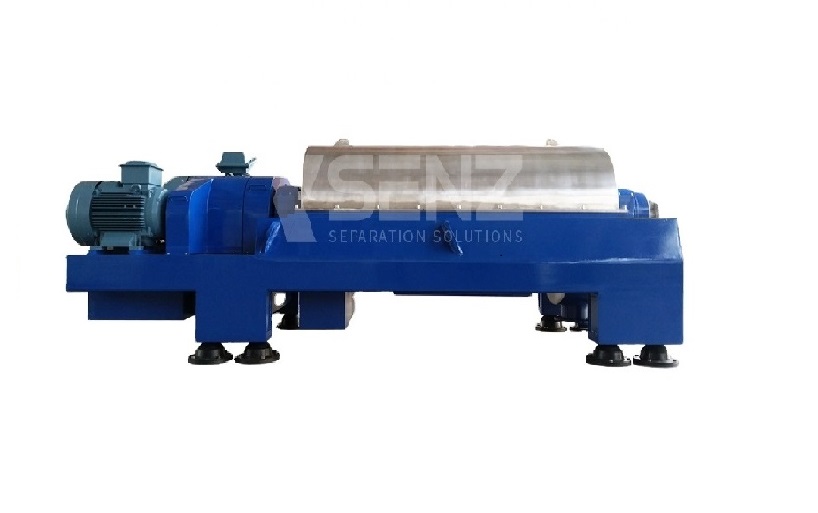With a 3 phase decanter centrifuge, it is possible to separate 3 phases from each other in one process step only. For example, two liquids which cannot be mixed because of different densities (e.g. oil and water) are separated from a solids phase. The heavy liquid (water) collects in the middle between the oil and the solids layer. Thus the two liquids separated from each other can be drawn off from the decanter. The solids are transported via the scroll to the discharge openings as it happens also in 2-phase separation.
Typical applications of 3-phase separation are the production of edible oils such as olive oil, oil sludge processing, the
production of biodiesel etc.
Parameters and influencing factors of the separation
Through the feed, the separation medium to be processed can be input into the center of the infeed chamber of the scroll, where it is accelerated. The throughput will have an influence on the residence time.
Decanter Centrifuges Acceleration
The separation medium reaches its maximum speed in the decanter bowl, causing the solids to settle on the bowl inner diameter. A characteristic feature of the bowl is its cylindrical/conical shape.
Differential speed
There is a differential speed between the decanter bowl and the scroll, which is created by a gear unit on the industrial decanter centrifuges. The differential speed determines the solid content in the outfeed.
Filling volume / Weir discs or overflow weir
The clarified liquid flows to the cylindrical end of the bowl in the decanter centrifuge, from where it runs out through openings in the bowl cover. These openings contain precisely adjustable weir discs/weir plates by means of which the pond depth in the bowl can be set. The weir discs determine the filling volume of the bowl.
Advantages and limitations over competitive processes
Generally the decanter centrifuge has more advantages than disadvantages; however, there are some limitations when compared to other processes.
Decanter Centrifuges Advantages:
* Decanter centrifuges have a clean appearance and have little to no odor problems.
* Not only is the device easy to install and fast at starting up and shutting down but also only requires a small area for
operation compared to other competitive processes.
* The decanter centrifuge is versatile as different lengths of the cylindrical bowl section and the cone angle can be selected for different applications. Also, the system can be pre-programmed with various design curves to predict the sludge type, while some competitive processes, such as a belt filter press, cannot change the belt type to operate for different sludge types. Its versatility allows the machine to have various functions such as operating for thickening or dewatering.
* The machine can operate with a higher throughput capacity than smaller machines. This also reduces the number of units required.
* The device is simple to optimize and operate as it has few major variables and reliable feedback information.
* The decanter centrifuge has reduced labor costs compared to other processes, as it requires low continuous maintenance and operator attention.
* Compared to some competitive process such as the belt filter process, the decanter centrifuge has more process flexibility and higher levels of performance.
Decanter Centrifuges Limitations:
* The decanter centrifuges cannot separate biological solids with very small density differences, such as cells and viruses. A competitive process that is capable of separating these difficult-to-separate solids is the tubular-bowl centrifuge.
* The machine can be very noisy and can cause vibration.
* The device has a high-energy consumption due to high G-forces.
* The decanter centrifuge has high equipment capital costs. Hard surfacing and abrasion protection materials are required for the scroll to reduce wear and therefore reduce the maintenance of the scroll wear.




